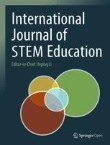- Social Sciences Citation Index (SSCI)
- SCOPUS
- CNKI
- EBSCO Discovery Service
- ERIC
- ERIH PLUS
- Google Scholar
- OCLC WorldCat Discovery Service
- ProQuest Advanced Technologies & Aerospace Database
- ProQuest Computer Science
- ProQuest Environmental Science
- ProQuest Engineering
- ProQuest Agricultural & Environmental Science Database
- ProQuest Biological Science Database
- ProQuest Central
- ProQuest Earth Atmospheric & Aquatic Science Database
- ProQuest Education Database
- ProQuest Materials Science & Engineering Database
- ProQuest Natural Science Collection
- ProQuest SciTech Premium Collection
- ProQuest Social Science Collection
- ProQuest Technology Collection
- ProQuest-ExLibris Summon
- ProQuest-ExLibris Primo
- UGC-CARE List (India)
- TD Net Discovery Service
- Science Citation Index Expanded (SciSearch)
- SCImago
- Norwegian Register for Scientific Journals and Series
- Navar
- Journal Citation Reports/Social Sciences Edition
- Journal Citation Reports/Science Edition
- Gale
- Dimensions
- DOAJ
- Current Contents / Social & Behavioral Sciences
- Chinese Academy of Sciences (CAS) - GoOA
Gender gaps in grades versus grade penalties: why grade anomalies may be more detrimental for women aspiring for careers in biological sciences
In the US, bioscience programs now often have more women than men who earn degrees at all levels. Despite this, evidence still exists for gender inequity in bioscience and medical fields. For example, women wi...
